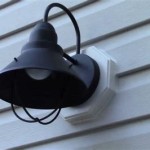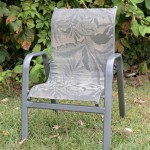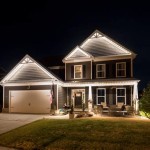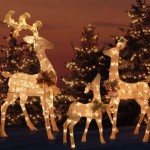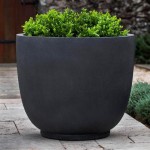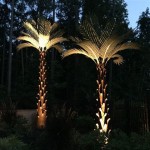Dimmable Outdoor Flood Light Bulbs: Functionality, Benefits, and Considerations
Outdoor flood lights serve as crucial components of residential and commercial security and aesthetic enhancement. Traditional flood lights, while offering illumination, often lacked the ability to adjust brightness, leading to wasted energy and potentially obtrusive lighting at times when intense brightness was unnecessary. Dimmable outdoor flood light bulbs address these limitations, providing users with granular control over their outdoor lighting environments. This article explores the functionality, benefits, and critical considerations associated with selecting and utilizing dimmable outdoor flood light bulbs.
The advent of dimmable flood lights has significantly expanded the versatility of outdoor lighting. Users can now tailor the intensity of the light to match specific needs and circumstances. This adaptability contributes to energy savings, improved ambiance, and enhanced security features. The range of dimmable flood light bulbs available encompasses various technologies, each with its own advantages and disadvantages. Understanding these differences is crucial for making informed purchasing decisions and optimizing the performance of outdoor lighting systems.
Key Point 1: Understanding Dimmable Flood Light Bulb Technologies
Dimmable outdoor flood light bulbs primarily utilize either Light Emitting Diode (LED) or incandescent technologies. While incandescent bulbs have historically been dimmable with relative ease using standard dimmer switches, they are significantly less energy-efficient and have shorter lifespans compared to LED alternatives. LED technology, on the other hand, presents a more complex dimming scenario due to its electronic nature. However, the superior energy efficiency and longevity of LEDs make them the preferred choice for modern outdoor lighting solutions.
For LED flood lights to be dimmable, they must be specifically designed to be compatible with dimmer switches. Older LED bulbs not designed for dimming may flicker, buzz, or fail prematurely when connected to a dimmer. Therefore, it is imperative to verify that the LED bulb is explicitly labeled as "dimmable" before installation with a dimmer switch. Moreover, the dimmer switch itself needs to be compatible with the LED technology being used. Not all dimmer switches are created equal; some are designed for incandescent bulbs and may not function correctly with LEDs.
Several types of dimming technologies are employed in dimmable LED flood lights. These include Pulse-Width Modulation (PWM), triode for alternating current (TRIAC) dimming, and 0-10V dimming. PWM adjusts brightness by rapidly switching the LED on and off, with the ratio of on-time to off-time determining the perceived brightness. TRIAC dimming, commonly used with incandescent bulbs, is also compatible with some dimmable LEDs, but compatibility should be explicitly verified. 0-10V dimming offers a wider dimming range and smoother transitions, making it suitable for more demanding applications. This technology typically uses a low-voltage control signal to adjust the brightness of the LED.
When selecting dimmable LED flood light bulbs, it is crucial to ascertain the dimmer compatibility. The packaging should explicitly state which types of dimmer switches are compatible with the bulb. Some manufacturers provide a list of compatible dimmer models for optimal performance. Using an incompatible dimmer can not only lead to poor dimming performance but also potentially damage the bulb or the dimmer switch.
Furthermore, it's important to consider the color temperature of the LED bulb. Color temperature, measured in Kelvin (K), affects the perceived warmth or coolness of the light. Warmer temperatures (e.g., 2700K-3000K) produce a yellowish light, while cooler temperatures (e.g., 4000K-5000K) produce a whiter or bluish light. The desired color temperature should align with the intended application and the overall aesthetic of the outdoor space. For residential applications, warmer temperatures are often preferred for creating a welcoming and inviting atmosphere. Cooler temperatures are frequently used in commercial settings where visibility and security are paramount.
Key Point 2: Benefits of Using Dimmable Outdoor Flood Lights
The implementation of dimmable outdoor flood lights offers a multitude of benefits, ranging from energy conservation to enhanced security and improved ambiance. These advantages make dimmable flood lights a compelling choice for both residential and commercial properties.
Energy savings constitute a significant advantage of dimmable flood lights. By reducing the brightness of the lights when full illumination is not required, energy consumption can be significantly lowered. This translates to lower electricity bills and a reduced environmental footprint. For instance, on evenings with clear visibility, the brightness of the flood lights can be dimmed, conserving energy without compromising security. Similarly, during periods of inactivity, such as late at night, the brightness can be further reduced to minimize energy waste.
Dimmable flood lights also enhance security by allowing users to adjust the lighting levels to suit specific security needs. Full brightness can be used to deter potential intruders, while lower brightness settings can be used to provide ambient lighting without attracting unwanted attention. The ability to quickly adjust the brightness of the flood lights can also be a valuable asset in responding to suspicious activity. For example, illuminating an area at full brightness can startle a potential intruder and alert neighbors to a possible security breach.
Beyond security and energy savings, dimmable flood lights contribute to improved ambiance and aesthetics. By controlling the intensity of the light, users can create a more inviting and comfortable outdoor environment. This is particularly beneficial for outdoor entertaining areas, such as patios and decks. Lower brightness settings can create a more relaxed and intimate atmosphere, while higher brightness settings can be used for activities that require better visibility. The ability to adjust the brightness also allows users to highlight specific architectural features or landscaping elements, enhancing the overall visual appeal of their property.
Furthermore, dimmable flood lights can minimize light pollution. Excessive outdoor lighting can disrupt natural ecosystems and interfere with astronomical observations. By using dimmable flood lights and reducing the brightness when full illumination is not necessary, users can minimize light pollution and contribute to a more environmentally responsible lighting strategy. This is particularly important in areas with strict lighting regulations or where residents are concerned about the impact of light pollution on their community.
Another benefit is the extended lifespan of the bulb. Running an LED bulb at a lower brightness generally reduces the stress on the components, contributing to a longer operational life. This reduces the frequency of bulb replacements, resulting in further cost savings over time and less maintenance work required.
Key Point 3: Critical Considerations for Selecting and Installing Dimmable Flood Lights
Selecting and installing dimmable outdoor flood lights requires careful consideration of several factors, including bulb type, dimmer compatibility, environmental conditions, and installation practices. Paying attention to these aspects will ensure optimal performance, longevity, and safety of the lighting system.
The choice of bulb type is paramount. As previously discussed, LED technology is generally preferred due to its energy efficiency and long lifespan. However, it is crucial to select LED bulbs that are explicitly designed for dimming and compatible with the existing or planned dimmer switches. Verify the compatibility information provided by the bulb manufacturer to avoid potential performance issues or damage to the bulb or dimmer switch.
Environmental conditions also play a significant role in the selection process. Outdoor flood lights are exposed to the elements, including rain, snow, and extreme temperatures. Therefore, it is essential to choose bulbs that are rated for outdoor use and can withstand the expected environmental conditions. Look for bulbs with a suitable ingress protection (IP) rating, which indicates the bulb's resistance to water and dust. Higher IP ratings provide greater protection against the elements. Selecting a bulb that is specifically "wet-rated" is important for locations that are directly exposed to rain. A "damp-rated" bulb would be more suitable for locations under an eave.
Proper installation is crucial for ensuring the safe and reliable operation of dimmable flood lights. Follow the manufacturer's instructions carefully and adhere to all applicable electrical codes. Ensure that the wiring is properly insulated and protected from the elements. If unsure about any aspect of the installation process, consult a qualified electrician. Incorrect wiring can lead to electrical hazards, including shocks and fires.
The dimmer switch itself warrants careful consideration. Choose a dimmer switch that is specifically designed for LED bulbs and compatible with the selected dimming technology (e.g., PWM, TRIAC, or 0-10V). Use a dimmer switch designed for LEDs rather than incandescent bulbs for optimum performance. Furthermore, consider the dimmer switch's load capacity and ensure that it is sufficient to handle the total wattage of the connected LED flood lights. Overloading a dimmer switch can lead to overheating and failure.
Maintenance is also an important aspect of ensuring the longevity of dimmable outdoor flood lights. Regularly inspect the bulbs and fixtures for signs of damage or wear. Clean the bulbs periodically to remove dirt and debris, which can reduce their brightness and efficiency. Replace any damaged or non-functioning bulbs promptly to maintain the desired level of illumination and security. Regular maintenance will help to prolong the life of the bulbs and ensure that the lighting system continues to operate effectively.
Finally, consider the aesthetic impact of the flood lights. Choose fixtures and bulbs that complement the architectural style of the property and blend seamlessly with the surrounding landscape. The color temperature of the light should also be considered to create the desired ambiance. Pay attention to the direction and angle of the light to avoid glare and light trespass onto neighboring properties. A well-designed and installed lighting system can enhance the beauty and value of the property while providing security and energy efficiency.

Feit Electric 90 Watt Equivalent Par38 Dimmable Cec Title 20 Outdoor E26 Medium Flood Led Light Bulb Bright White 3000k 2 Pack Par38dm 930ca The Home Depot

Philips Led 90 Watt Par38 In Outdoor Flood Light Bulb Bright White Dimmable 40 Beam Spread E26 Medium Base 2 Pack Com

Ge Led 45w Par38 Outdoor Floodlight Light Bulb Bright White Target

Philips Led 120 Watt Par38 In Outdoor Flood Light Bulb Bright White Dimmable 40 Beam Spread E26 Medium Base 2 Pack Com

Noma Advanced Par38 E26 Base Dimmable Led Flood Light Bulb 1050 Lumens Daylight 90w Canadian Tire

Save On Ge Led Outdoor Floodlight Bulb Bright White Dimmable 90w Replacement Order Delivery Giant

Ecosmart 325 Watt Equivalent Par38 Dimmable Flood Led Light Bulb With Selectable Color Temperature 1 Pack G130p385 The Home Depot

Ge 12 Watt Led Daylight Dimmable Par30 Outdoor Floodlight Security Light 38447 Blain S Farm Fleet

Ge Outdoor Style 90 Watt Eq Par38 Warm White Medium Base E 26 Dimmable Led Light Bulb 2 Pack In The Spot Flood Bulbs Department At Com

Ge Nighthawk Ultra Bright Warm White 120w Replacement Led Outdoor Floodlight Par38 Light Bulb 1 Pack 46534 Rona
